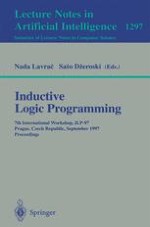This book constitutes the refereed proceedings of the 7th International Workshop on Inductive Logic Programming, ILP-97, held in Prague, Czech Republic, in September 1997.
The volume presents revised versions of nine papers in long version and 17 short papers accepted after a thorough reviewing process. Also included are three invited papers by Usama Fayyad, Jean-Francois Puget, and Georg Gottlob. Among the topics addressed are various logic programming issues, natural language processing, speech processing, abductive learning, data mining, knowledge discovery, and relational database systems.
